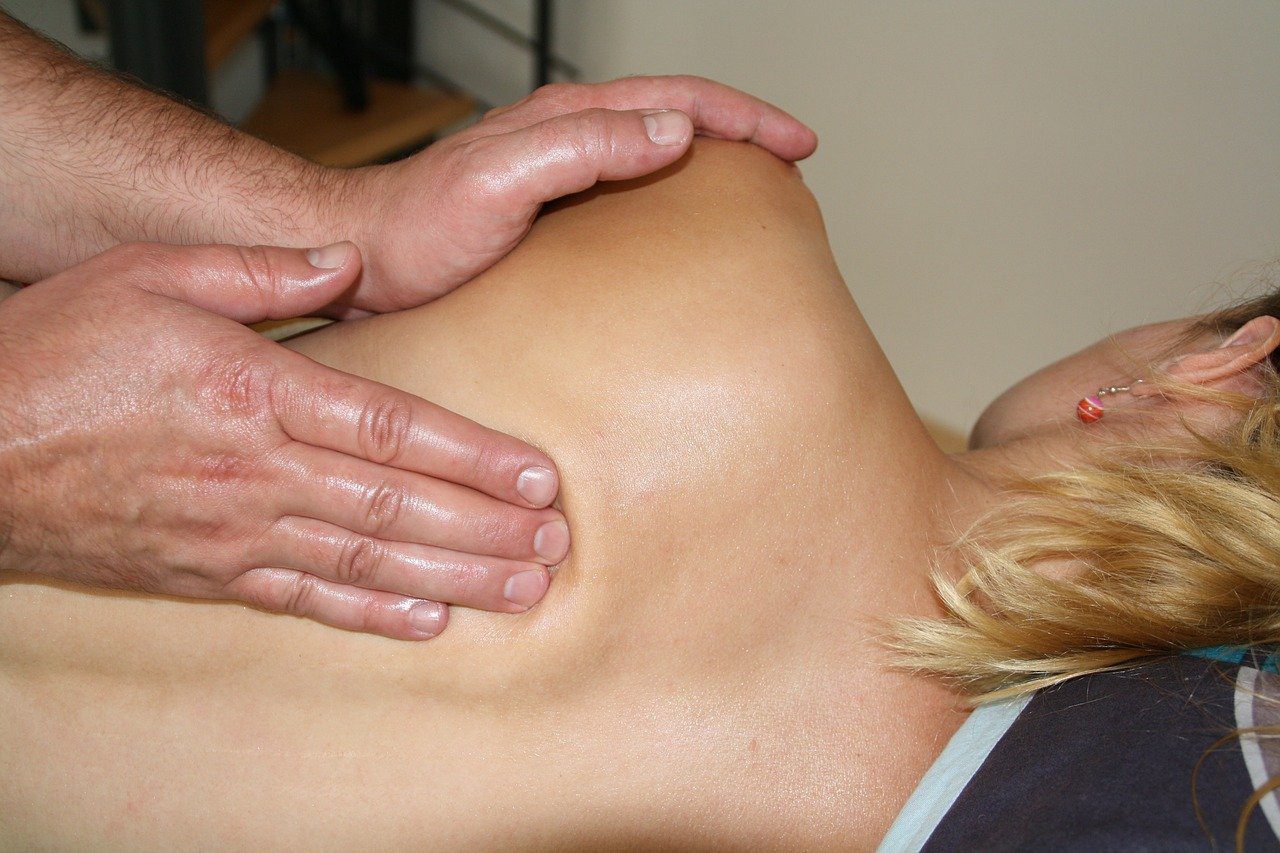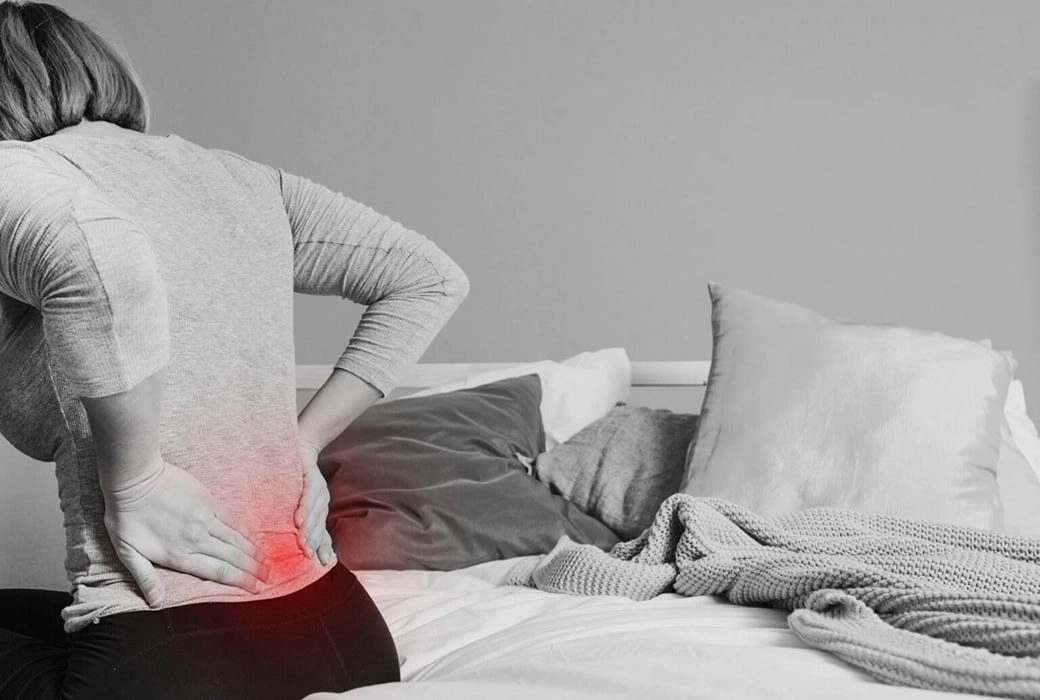You may have heard a medical professional use the term “spinal subluxation” or maybe you’re searching for what could be causing your back pain. Either way, here’s what you need to know about spinal subluxations.
Spinal subluxation is a term used mostly by chiropractors to denote a misalignment of one or more portions of the spinal vertebrae. Spinal subluxations are serious in that, if left untreated, they can cause permanent nerve damage and disc degeneration. They can also cause neurological conditions and debilitating pain.
What is Spinal Subluxation?
A subluxation, in general terms, is when a joint becomes misaligned in the body. Therefore, a subluxation can actually happen to any joint in the body. However, they’re most common in the spine because the human spine is made up of many complex joints that are meant to twist, bend, and flex. But with this ability of the spine to move comes the possibility of misalignment— subluxation.
Some subluxations don’t cause any problems in the short term, meaning they don’t cause pain. But that doesn’t mean they aren’t negatively affecting the body. A subluxation in the spinal vertebrae can cause problems in the future by causing disc degeneration
Spinal Subluxation Symptoms
While some spinal subluxations may not be symptomatic, the majority of them are. These symptoms include:
- Back pain
- Neck pain
- Headache
- Poor mobility
- Digestive issues
- Muscle tightness, weakness, or spasms around the spinal column
- Tingling or pain in the arms or legs
It’s important to note that, while many cases of back pain are caused by subluxations, it’s not always the case. For example, you can experience lower back pain after drinking alcohol that has nothing to do with your spinal column at all. For this reason, it helps to know some of the common causes of spinal subluxation.
What Causes Spinal Subluxation?
Trying to narrow down the cause of your back pain can be difficult without professional help. But, if you think you may be experiencing spinal subluxations, check the list below for common causes.
- Poor posture for an extended period of time
- A car accident, fall, or other trauma
- Edema
- Lifting heavy things with improper form
- Hyperemia (a lack of blood flow)
- Elevated stress levels
- Toxins in the body from poor diet
- Atrophy
- Fibrosis
- Sleeping awkwardly (stomach sleeping, especially)
- Wearing a heavy bag on one shoulder for an extended period
- Sitting for long periods
- Playing contact sports
As you can see, many of these are mechanical issues. However, even the ones that don’t seem like mechanical issues, like elevated stress levels and toxins, often manifest as such. High stress levels and toxins can both cause the muscles of the back to tighten, which can cause subluxations in the spine. Stress can also cause back pain with fever, which should be addressed by a medical professional if it continues for more than a few days.
Let’s just say that the old saying about carrying stress in your back is no joke.
Effects of Spinal Subluxation
Now that we’ve covered the causes of spinal subluxation, let’s cover the effects.
There’s a growing amount of evidence that spinal subluxations can affect many different facets of the body. Since the nervous system runs through the spinal column, it’s not hard to understand how parts of the body seemingly unconnected with the spine can be affected.
Long term effects may include:
- Digestive and/or respiratory problems
- Anxiety and depression
- Inability to concentrate
- Low energy levels
- Trouble sleeping
- Mood swings
- Bone spurs
- Spinal arthritis

Chiropractic Subluxation Theory
Many people see a chiropractor for lower back pain— or any back pain for that matter— without knowing exactly what is causing their back pain. Since chiropractors are experts in the musculoskeletal system, it makes sense to seek the care of a chiropractor for back or joint pain. But, many people don’t understand the theory behind chiropractic care and subluxations.
In short, chiropractic subluxation theory states that neurological conditions and mechanical conditions of the spine go hand-in-hand. When the spine is out of alignment, it can cause issues throughout the body, due to the central nervous system’s nature and its course through the spinal column.
Positive Effects of Spinal Adjustments
Similar to the way a massage can help you relax and de-stress, a spinal adjustment can not only help reduce your pain, but it can also improve mood, stress levels, your ability to sleep, and even your ability to focus.
This theory lies behind chiropractors’ view regarding the body as one single unit where everything is connected. A change in one part of the body affects changes in the other parts, even if we’re not consciously aware of them.
This is one of the reasons why more and more people are heading to chiropractors for stress-relief and relaxation. After a spinal adjustment, it’s common for patients to feel a sense of well-being, energy, and focus. Athletes are starting to head to chiropractors for similar reasons, even if they aren’t experiencing pain or other symptoms.
Chiropractic subluxation theory states that when the spine is in its proper alignment, the body is in a better position to operate maximally, both physically and mentally.
Spinal Subluxation Exercises
Now, you may be wondering if there are things you can do at home to help correct spinal subluxations. You’re in luck! Below are some things to help back pain due to spinal subluxations.

1. Cobra Pose
Great for strengthening the muscles around the spine, which can help correct and also prevent subluxations.
- Lay down flat on your stomach on the floor.
- Place your palms flat on the floor right under your shoulders and hug your elbows in to your sides.
- Keeping your lower abdomen, pelvis, and legs firmly against the floor, raise your upper body up, using your back muscles to lift you but your hands to keep you steady.
- Keep the neck in a neutral position, meaning you aren’t pulling it back to look up at the ceiling or keeping your chin tucked to your chest.
- Hold the position as high as is comfortable for you for 3 to 5 seconds, then release back down.
- Repeat 5 to 8 times.

2. Plank Pose
Great for strengthening your entire core to protect your spine.
- Get into the push-up position, your hands under your shoulders, legs straight, and toes on the floor.
- Push-up into the top position and hold there. Engage your core, squeeze your glutes, and maintain a straight line from your heels to the back of your head.
- Hold the pose for 15 to 30 seconds to start, working your way up to 1 minute as you grow stronger over time.
- Once your time is up, release back down to the ground under control.
- Repeat 3 to 5 times.
You can also do the plank pose down on your elbows instead of your hands.

3. Crunches
Great for strengthening your abs, which helps your core and your spine stay strong.
- Lay down on your back with your knees bent and your feet flat on the floor.
- Place your hands across your chest, setting each hand on the opposite shoulder.
- Using your core, raise your shoulder blades and upper back off the floor.
- Hold the pose for one second, then release back down.
- Repeat 25 to 30 times, up to 5 sets per day.
Resources:
https://ard.bmj.com/content/65/7/884.short
https://www.sciencedirect.com/science/article/abs/pii/S0161475400900769
https://www.ncbi.nlm.nih.gov/pmc/articles/PMC3342797/#:~:text=Chiropractic%20subluxation%20theory%20is%20one,have%20used%20the%20term%20subluxation.









